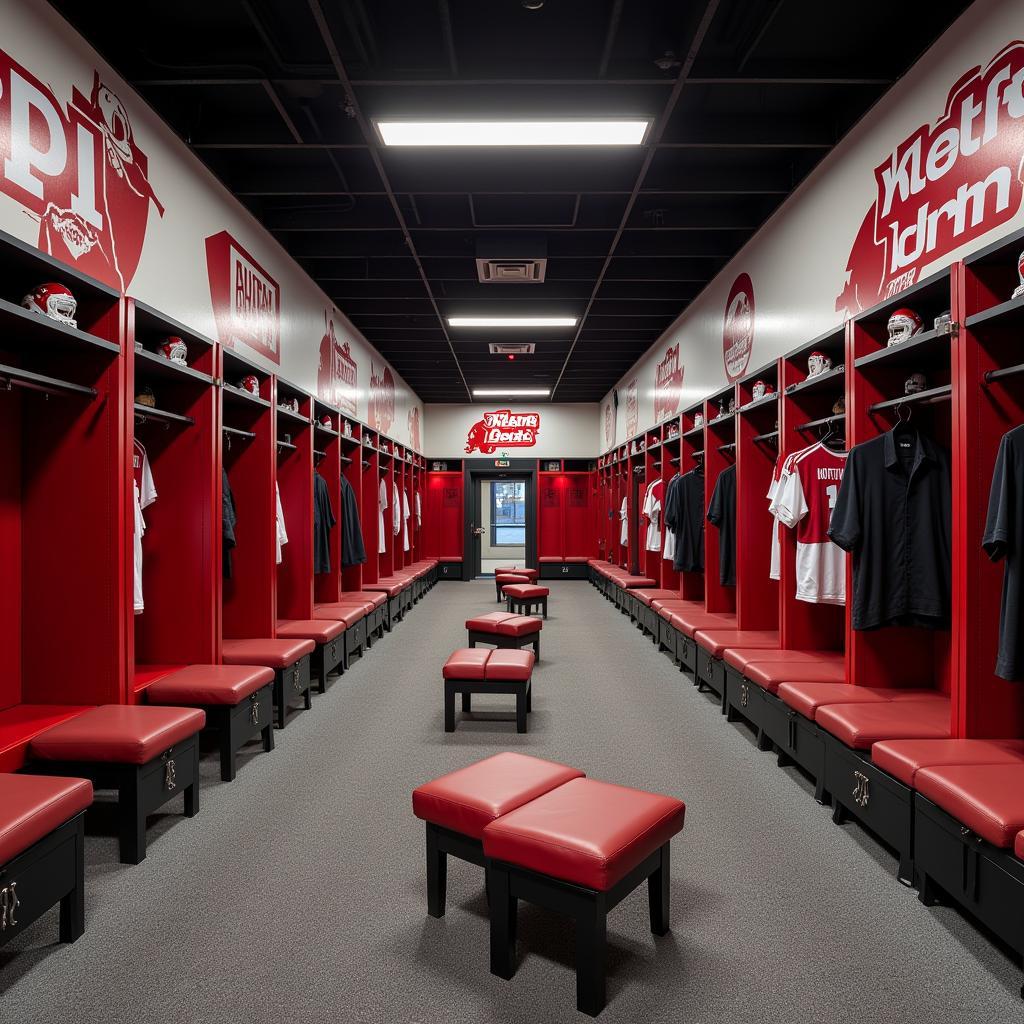Football Locker Room Design Standards
November 4, 2024A well-designed locker room is essential for any football team, impacting player morale, performance, and even injury prevention. Understanding locker room design standards is crucial for creating a space that caters to the needs of elite athletes. From ventilation to locker dimensions and material choices, we’ll explore everything you need to know about creating the ultimate football changing room.
Key Elements of Football Locker Room Design Standards
Designing a high-performance locker room goes far beyond simply providing a place to change. It requires a deep understanding of athlete needs and the practicalities of a high-intensity sporting environment. These standards encompass crucial elements that contribute to a functional and motivating space.
Ventilation and Air Quality
Proper ventilation is paramount. A locker room can quickly become a breeding ground for bacteria and odors. Effective airflow systems are essential to control humidity, prevent mold growth, and maintain a fresh, hygienic environment. This is not only important for player comfort but also for minimizing the risk of infections.
Locker Dimensions and Material
Lockers should be spacious enough to accommodate all of a player’s gear, including boots, shin guards, and personal belongings. Durable, water-resistant materials are a must. Consider individual lockers that can be customized with nameplates and personal touches to foster a sense of ownership and team unity.
Flooring and Drainage
Locker room floors experience heavy foot traffic and are often wet. Slip-resistant, durable, and easily cleanable flooring is crucial. Effective drainage systems are also essential to prevent waterlogging and ensure a safe, hygienic environment.
 Locker Room Flooring and Drainage System
Locker Room Flooring and Drainage System
Lighting and Ambiance
Lighting plays a significant role in setting the mood. Bright, well-distributed lighting is crucial for visibility and creating a positive atmosphere. Consider incorporating team colors and motivational elements to enhance the space and foster team spirit.
Technology Integration
Integrating technology into the locker room can enhance player preparation and recovery. Screens for game analysis, charging stations for devices, and sound systems for music can all contribute to a more professional and engaging environment.
Why Locker Room Design Standards Matter
Investing in a well-designed locker room is an investment in the team’s success. A comfortable and functional space can boost morale, improve team cohesion, and promote a sense of professionalism. This positive environment can translate to better performance on the field.
Impact on Player Morale and Performance
A well-designed locker room provides players with a comfortable and private space to prepare for matches and unwind afterward. This sense of comfort and belonging can contribute significantly to player morale and, ultimately, to their performance on the pitch.
 Modern Football Locker Room Design
Modern Football Locker Room Design
Hygiene and Injury Prevention
Proper hygiene and sanitation in the locker room are crucial for preventing the spread of infections and promoting player health. Furthermore, a well-maintained locker room with appropriate flooring and drainage can minimize the risk of slips and falls, reducing the likelihood of injuries.
Optimizing Locker Room Design for Different Levels
Locker room design standards can vary based on the level of play, from youth teams to professional clubs. While the core principles remain consistent, certain aspects may need adjustments based on the specific needs and budget of each team.
Professional vs. Amateur Locker Rooms
Professional locker rooms often feature more advanced amenities and technologies compared to amateur facilities. However, the fundamental principles of hygiene, functionality, and player comfort remain essential across all levels.
Conclusion
Locker room design standards play a vital role in creating an environment that fosters success for any football team. By focusing on key elements like ventilation, locker dimensions, flooring, lighting, and technology integration, teams can create a space that promotes player comfort, hygiene, and ultimately, enhances performance. Investing in a well-designed locker room is a crucial step towards creating a winning culture. Remember, a well-equipped and designed changing room can be the difference between a good team and a great one.
FAQ
- What is the ideal size for a football locker?
- What are the best materials for locker room flooring?
- How can technology be integrated into a locker room?
- What are the key ventilation requirements for a locker room?
- How can locker room design influence player morale?
- What are the essential safety features in a locker room?
- How do locker room design standards differ for professional and amateur teams?
Common Locker Room Design Questions
What are some common mistakes to avoid in locker room design? Poor ventilation, inadequate drainage, and insufficient lighting are some common pitfalls to avoid. It’s also important to choose durable and easy-to-clean materials to withstand the demands of a busy athletic environment.
Further Resources
Check out our other articles on stadium design and sports facility management for more information.
Contact Us
For assistance with your locker room design project, contact us at Phone Number: 0396443476, Email: [email protected] Or visit us at: 23 Tháng 3, Đắk Nia, Gia Nghĩa, Đắk Nông, Việt Nam. We have a 24/7 customer service team.